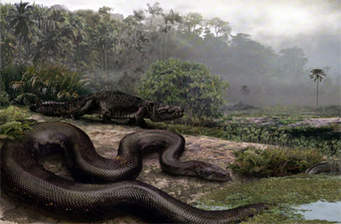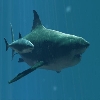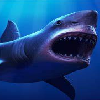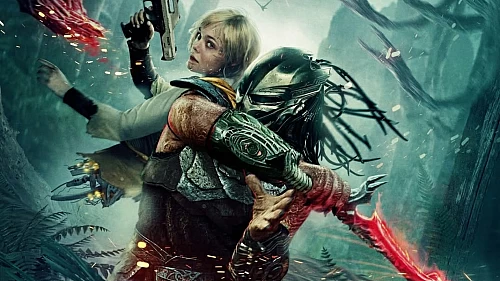Deinosuchus Vs. Titanoboa
Other Fandoms Forum Topic

Kamoebas V.6
MemberContributorAug 16, 201918217 Views19 Replies
About Deinosuchus
Deinosuchus was a prehistoric crocodile which lived approximately 80 to 70 million years ago during the Late Cretaceous Period. Its fossils – which originally consisted of just two large teeth – was first discovered in the mid-19th century by a geologist named Ebenezer Emmons. When he discovered them he placed them in the same category as Polyptychodon – a dinosaur species he thought was a species of crocodile-like reptiles. However, as more fossils were unearthed, it became clear that Polyptychodon was actually a pliosaur, so Deinosuchus was placed into its own genus in 1909. It was then given its own name, a name which means “terrible crocodile” in Greek.
If you looked closely at Deinosuchus pictures, then you would most likely agree with the name “terrible crocodile” because it was indeed one. It was approximately 33 feet long – or about twice the size of a saltwater crocodile, and weighed around 10 tons – or 20,000 pounds! It also had a very large head that was about 6 feet long and filled with many razor-sharp teeth. It would have been a terrible crocodile for any of its prey to run across and that’s for sure.
Of course, paleontologists really can’t tell how large these crocodiles grew. That’s because they continued to grow their entire life – much like modern crocodiles do. In fact, they would have grown about a foot a year during their lifetimes. Which means that it is quite possible they grew even larger than 33 feet, especially if they lived as long as a modern saltwater crocodile – which is about 70 years.
One of the most interesting facts about Deinosuchus is that it was thought to have been the largest crocodile to have ever lived for quite some time. At least, it was until Sarcosuchus came along – a crocodile that was 50 feet long and weighed 15 tons. After that discovery, Deinosuchus came in second place as the next largest crocodile.
Being so large, Deinosuchus probably could have had its pick at what it wanted to eat. Most likely, it would have lived off of shellfish and fish that it found in the water, dead animals that it could have scavenged and maybe even land animals. It is also quite possible that this prehistoric crocodile may have eaten the occasional dinosaur every now and then.
About Titanoboa
Titanoboa is an extinct snake which lived approximately 60 million years ago during the Paleogene Period. Its fossils were first discovered in coal mines in La Guajira, Colombia in 2009. Later that year, it was given its name – a name which means “titanic boa.”
If you look closely at Titanoboa pictures, then you can clearly see just how huge this snake really was. It was approximately 50 feet long and weighed around 2,500 pounds. To put that into perspective, that is twice as long as the longest snake living today and 4 times as heavy as the giant anaconda. It is definitely a snake that you wouldn’t want to meet.
One of the most interesting facts about Titanoboa is that while it looked quite a bit like a modern-day anaconda, it most likely didn’t hunt like one. Modern anacondas hunt by wrapping themselves around their prey and constricting them to death. Titanoboa probably didn’t do that. Most likely, it sneaked up on its prey and with one quick strike, bit them in the jugular. That would have allowed it to consume it meal at its own leisure. However, like a boa, it was capable of constricting on its prey when necessary, although it wasn’t its first option.
Why did this prehistoric snake grow so large? Well, the fact of the matter is that the area in which it lived contributed to its growth. During this period of time in Columbia and Peru – the part of South America in which this snake thrived – it was very hot and humid. In fact, temperatures would have been in the 90s all of the time. Which is really beneficial for cold-blooded reptiles like Titanoboa. Cold-blooded reptiles always grew much larger sizes in areas which have both high temperature and high humidity.
Another fact about this reptile is that it was a carnivore which preyed on a variety of different animals. It could have eaten a variety of smaller reptiles and birds, and may even have hunted crocodiles! It certainly would have been big enough to hunt them.



